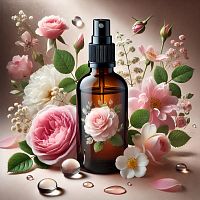-
 Absolutes
Absolutes
-
 Active Complexes
Active Complexes
-
 Actives and Peptides for Cosmetics
Actives and Peptides for Cosmetics
-
 Amino Acids
Amino Acids
-
 Food Flavorings
Food Flavorings
-
 Ayurveda
Ayurveda
-
 Vitamins
Vitamins
-
 Gelling Agents and Thickeners
Gelling Agents and Thickeners
-
 Hydrosols and Floral Waters
Hydrosols and Floral Waters
-
 Hydrolyzed Proteins
Hydrolyzed Proteins
-
 Fragrant and aromatic substances
Fragrant and aromatic substances
-
 Acids, Salts, Alcohols, and Alkalis
Acids, Salts, Alcohols, and Alkalis
-
 Preservatives and Antioxidants
Preservatives and Antioxidants
-
 Cosmetic Raw Materials
Cosmetic Raw Materials
-
 Dyes, Pearlescents, and Glitters
Dyes, Pearlescents, and Glitters
-
 Face Masks, Scrubs, and Dried Flowers
Face Masks, Scrubs, and Dried Flowers
-
 Oils, batters, macerates, oil mixtures
Oils, batters, macerates, oil mixtures
-
 Candle Supplies
Candle Supplies
-
 Melt and Pour Soap Bases
Melt and Pour Soap Bases
-
 Base for cosmetics, cream, serum, shampoo
Base for cosmetics, cream, serum, shampoo
-
 Fragrance Oils
Fragrance Oils
-
 Surfactants
Surfactants
-
 Peelings for Skin
Peelings for Skin
-
 Herbal Powders and Plant
Herbal Powders and Plant
-
 Silicones and Conditioning Surfactants for Hair
Silicones and Conditioning Surfactants for Hair
-
 Raw materials for dietary supplements
Raw materials for dietary supplements
-
 Packaging for Cosmetics and Perfumes
Packaging for Cosmetics and Perfumes
-
 Molds, Packaging, Tools
Molds, Packaging, Tools
-
 Organic Extracts
Organic Extracts
-
 Emollients for Cosmetics
Emollients for Cosmetics
-
 Emulsifiers
Emulsifiers
-
 Essential Oils
Essential Oils
Para-Aminobenzoic Acid (PABA): A Look at its History and Use in Cosmetics
Mylo Opt is a leading supplier of cosmetic ingredients in Ukraine. While we prioritize the safety and effectiveness of our products, this informational guide explores Para-Aminobenzoic Acid (PABA), a historical sunscreen ingredient, and its past use in cosmetics.
Disclaimer: Due to potential concerns regarding allergies, irritation, and limited broad-spectrum protection, Mylo Opt does not currently offer PABA in its product line. We recommend exploring safer and more effective sunscreen alternatives.
What is PABA?
PABA, also known as para-aminobenzoic acid, is a white crystalline powder historically used as a chemical sunscreen ingredient. It primarily absorbs UVB rays, the type of ultraviolet radiation responsible for sunburn.
History of PABA in Cosmetics:
PABA was first introduced in the 1970s as a revolutionary sunscreen ingredient. It offered significant protection against UVB rays, leading to its widespread use in sunscreens, lotions, and cosmetics with SPF claims.
Why Did PABA Fall Out of Favor?
While PABA offered UVB protection, several drawbacks led to its decline in popularity:
- Allergic Reactions: PABA can cause allergic reactions in some individuals, leading to skin irritation, redness, and itching.
- Photosensitivity: PABA can increase skin sensitivity to sunlight, potentially causing sunburn or worsening existing skin conditions.
- Limited Broad-Spectrum Protection: PABA primarily protects against UVB rays, but not UVA rays, which contribute to premature aging and skin cancer.
- Environmental Concerns: Some studies suggest PABA may harm coral reefs and marine ecosystems.
Safer Alternatives to PABA:
Fortunately, advancements in sunscreen technology have yielded safer and more effective alternatives to PABA. Mylo Opt offers a wide range of broad-spectrum sunscreens containing ingredients like:
- Zinc Oxide: A mineral sunscreen that effectively blocks UVA and UVB rays.
- Titanium Dioxide: Another mineral sunscreen that offers broad-spectrum protection.
- Avobenzone: A chemical sunscreen that absorbs a broad range of UVA rays.
- Octisalate: A chemical sunscreen that absorbs UVB rays.
These ingredients, often combined in sunscreens, provide comprehensive sun protection without the potential drawbacks of PABA.
PABA Regulations and Safety:
The safety of PABA in cosmetics is a complex issue. While not banned, some regulatory bodies have restricted its concentration in sunscreens. It's crucial to consult with a dermatologist for personalized advice on sun protection and ingredient safety.
Mylo Opt's Commitment to Safe Cosmetics:
At Mylo Opt, we prioritize the safety and effectiveness of our cosmetic ingredients. We offer a wide variety of sunscreens formulated with the latest advancements in sun protection technology. Our team is dedicated to providing you with the resources and information you need to make informed choices about your skincare routine.
Additional Considerations:
- Sun Protection Beyond Ingredients: Sun protection goes beyond sunscreen. Wearing protective clothing, seeking shade, and limiting sun exposure are crucial for optimal sun safety.
- Importance of Broad-Spectrum Protection: Look for sunscreens labeled as "broad-spectrum" to ensure protection against both UVA and UVB rays.
- Consult a Dermatologist: For personalized skincare advice and recommendations on sun protection based on your skin type and needs, consult a dermatologist.
Key takeaway: While PABA played a historical role in sun protection, safer and more effective alternatives are available. Mylo Opt prioritizes providing you with high-quality ingredients for responsible cosmetic formulation.
We encourage you to explore our vast selection of sunscreens and other skincare products formulated with the latest advancements in safety and effectiveness.
"| INCI | PABA | |
| Other | ||
| Application | cosmetics, creams, ointments, serums, hair cosmetics | |
| Color product | from white to slightly yellowish beige | |
| Features | All information presented on the site is for reference only | |
| Input percentage | from 1 to 5% | |
| Minimum count | 1 | |
| Name | Para-aminobenzoic acid, 100 g | |
| Packaging | container for transportation | |
| Packing | 100 gr | |
| Properties | Not only can PABA prevent sunburn, it is also used as a gray hair darkening agent. There is evidence that para-aminobenzoic acid helps prevent hair loss and has a rejuvenating effect on the skin. Aminobenzoic acid is used in care products, decorative cosmetics and personal care products in various concentrations (from 1% to 15%). First of all, PABA is present in cosmetics and personal care products as a product filter to protect skin and hair from the sun. In addition to sunscreen series, this ingredient may contain self-tanners, shampoos and conditioners, moisturizing and cleansing lotions, products for the prevention and treatment of hair loss, and hair sprays. In the USA, the maximum permissible concentration of aminobenzoic acid in a cosmetic product is 15% (in Europe - 5.0%). | |
| Purpose | When applied to the skin, it absorbs ultraviolet rays, and this protects it from burns, premature aging of the skin and reduces the risk of developing melanoma and other forms of skin cancer. | |
| Solubility | in water | |
| View | crystals, powder | |
| Valid until | 09.2026 | |
-
Date:todayAuthor:Домініка, КиверцыReviews
Відмінний магазин! Завжди раджу його своїм друзям і знайомим.










 Add to cart
Add to cart Buy in 1 click
Buy in 1 click

 Add a review
Add a review To favorites
To favorites To compare
To compare














